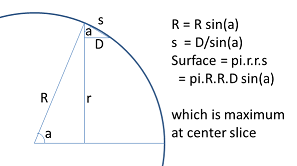Batch 3 - Class 193 - Binary and Ternary Coin Problems
Pre-Class Exercise
- (Dudeney - 120) Farmer Longmore had a curious aptitude for arithmetic, and was known in his district as the "mathematical farmer." The new vicar was not aware of this fact when, meeting is worth parishioner one day in the lane, he asked him in the course of a short conversation, "Now, how many sheep have you altogether?" He was therefore rather surprised at Longmore's answer, which was as follows: "You can divide my sheep into two different parts, so that the difference between the two numbers is the same as the difference between their squares. Maybe, Mr. Parson, you will like to work out the little sum for yourself." How many sheep did Longmore have?
- The farmer had one sheep only! If he divided this sheep into two parts, making one part 2/3 and the other 1/3, then the difference between these two numbers is the same as difference between their squares - that is, 1/3. Any two fractions will do if the denominator equals sum of the two numerators.
- An alternate answer can be that it is any even number, so when you divide it into two equal parts, the difference between these two numbers is the same as difference between their squares - that is, 0.
Attendance Mahi, Arjun, Rohan, Rehan, Siddhant, Rhea, SiddharthM, Angad
Class puzzles
Quick Review of Binary and Ternary
- Lets get to binary counting - base 2. What digits can we use and what are the place values?
- Exercise 1: Ask kids to write certain decimal numbers in binary
- Exercise 2: Ask kids to read certain binary numbers in decimal
- Exercise 3: Counting - Count using five fingers. Revise how each digit moves (first one toggles, and each one then toggles when the one of its left goes to 0)
- There are 3 coins, of which all are the same weight except one which is heavier. How many weighings on balance do you need to figure out the heavier coin?
- There are 9 coins, of which all are the same weight except one which is heavier. Can you figure out in two weighings of balance which one is the heavier coin?
- See if kids can solve it just through logical thinking
- See if they can get to groups of 3 - why 3? The balance has three outcomes - heavier, lighter, same)
- Map heavier/ lighter/ same as ternary digits 0, 1, 2. Can you now write down all the outcomes as ternary numbers? How many such ternary numbers exist?
- Can you do the inverse - if we label the coins 0..8, write their ternary notation and figure out where each coin should go in the two weighings
- There are 12 coins, all identical in appearance, and all identical in weight except for one, which is either heavier or lighter than the remaining 11 coins. Devise a procedure to identify the counterfeit coin in only 3 weighings with a balance.
- Answer: This can be thought of as a ternary problem. With three weighings, we can get to 27 outcomes (on each weighing, the balance is either heavy on left, balanced, or heavy on right). With 12 coins, we can have 24 outcomes (coin number 1..12 being defective, with possibility of it being heavy or light). We can arrange the problem so that the ternary value of the weighings corresponds to defective coin, and by using digits -1, 0, 1 the actual coin can be identified with the number it forms. So for example, if coin 6 is heavy, then its 1, -1, 0 and hence coin 6 should appear in left pan on first weighing, right pan on second weighing and be absent on third. Notice that we will get -6 automatically if coin 6 was light. This will give us the following answer, with some flipping around to make sure each place value has 4 1's and 4 -1's:
(9) first weighing 5,6,8,10 7,9,11,12
(3) second weighing 2,3,4,7 5,6,11,12
(1) third weighing 1,4,10,11 2,5,7,8
- If kids are unable to approach this problem, ask them to solve for 4 coins, with one standard coin available
- You have 1000 coins of the same size, each with a design on each face, so that no design is repeated. So total 2000 designs in all. You throw coins in air, take a note of the designs that are showing up, and repeat this procedure until you are able to pair up the designs as front and back of the same coin. What is the minimum number of throws needed to identify all the pairs?
- Example: If you had only five coins, and the first throw is ABCDE, and the second through is BCDEF, then you know that designs A nd F are paired on the same coin.
- Answer: 2 + m, where m is the smallest number such that 2^m>=1000. Use the first two throws to discover all the designs. Now it is a binary problem of pairing these designs, along a tree. The eight solution is given below
.png)
- Kids who have done the above can think about what if these are not 2-sided coins, but m-sided dice.
Homework
- If we slice one half of a perfectly rounded loaf of bread into equal width slices, which piece has the most crust? Why?
- Answer: For each slice starting from the largest (middle) slice going outwards, the increase in surface width is same as reduction in slice size (determined by radius of slice). However, since the surface area of crust is proportional to surface width, but square of radius of slice, the middle piece must have largest crust area.
- For those who understand trigonometry,

References:
https://ia902701.us.archive.org/4/items/AmusementsInMathematicspdf/AmusementsInMathematics.pdf - Dudeney